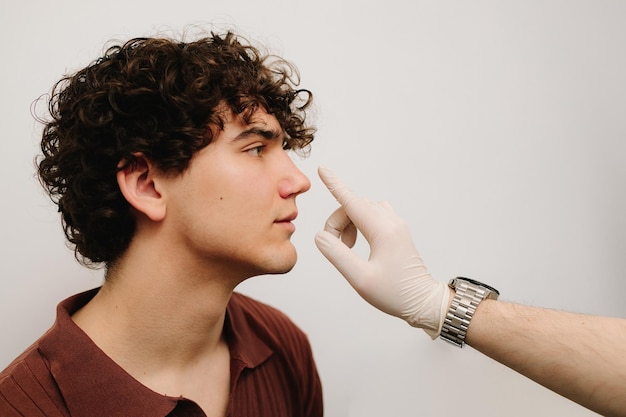Rhinoplasty, often referred to as a "nose job," is one of the most popular cosmetic procedures in the world. This surgical intervention is designed to reshape and enhance the nose, aligning it with the patient’s aesthetic goals while maintaining facial harmony. Whether you seek to correct a deformity, improve nasal function, or simply enhance your appearance, Rhinoplasty in Dubai can provide significant benefits. In this article, we will explore the various aspects of rhinoplasty and how it can pave your way to a perfect nose.
Understanding Rhinoplasty
At its core, rhinoplasty is a surgical procedure that can reshape the nose in numerous ways. It involves modifying the bone, cartilage, and skin to create a new nasal structure. Common reasons individuals seek this procedure include:
- Cosmetic Improvements: Many people desire a nose that is proportionate to their face. Rhinoplasty can reduce the size of a large nose, refine a bulbous tip, or straighten a crooked nose.
- Breathing Issues: Some patients choose rhinoplasty to correct structural defects that impede airflow, such as a deviated septum.
- Reconstruction: Following trauma or injury, rhinoplasty can restore the nose’s appearance and function.
Preparing for Rhinoplasty
Proper preparation is crucial for a successful outcome. During your initial consultation, the surgeon will evaluate your nose, discuss your goals, and develop a personalized plan. Here are some steps to consider:
- Medical History: Be ready to discuss your health, any medications you’re taking, and past surgeries. This information helps the surgeon assess your candidacy for rhinoplasty.
- Photographs: Surgeons often take photographs to plan the surgery and showcase potential outcomes.
- Expectations: Clearly communicate your desired results. Understanding what is achievable with rhinoplasty is essential to align expectations with reality.
The Surgical Procedure
Rhinoplasty can be performed using two main techniques: open rhinoplasty and closed rhinoplasty.
- Open Rhinoplasty: This technique involves making a small incision across the columella (the tissue between the nostrils). It provides the surgeon with a comprehensive view of the nasal structures, allowing for greater precision.
- Closed Rhinoplasty: This technique utilizes incisions within the nostrils, leaving no visible scars. It is typically used for minor adjustments or refinements.
The choice between these techniques depends on the complexity of the procedure and the surgeon’s assessment.
Recovery After Rhinoplasty
Recovery after rhinoplasty is a vital aspect of the process. While each patient’s experience is unique, there are general guidelines to follow:
- Immediate Care: Swelling and bruising are common post-operative issues. Ice packs and head elevation can help manage these symptoms.
- Follow-Up Appointments: Attend all scheduled follow-up visits to ensure proper healing and assess the results.
- Avoiding Strenuous Activity: It’s crucial to avoid heavy lifting, intense workouts, and contact sports for several weeks after the surgery.
While many patients return to their daily routines within a week, complete healing can take several months. Patience is essential as the final results gradually become apparent.
Expected Results
The ultimate goal of rhinoplasty is to achieve facial harmony and improved self-esteem. Patients often report feeling more confident and pleased with their appearance after the procedure. While initial results may be obscured by swelling, most patients will start seeing significant improvements within a few weeks. The final results, however, may take up to a year to fully manifest as the nose settles into its new shape.
Risks and Considerations
As with any surgical procedure, rhinoplasty carries risks. Potential complications include:
- Infection: While rare, infections can occur and may require treatment.
- Scarring: Depending on the technique used, some scarring may be inevitable. However, skilled surgeons minimize visible scars.
- Unsatisfactory Results: It is vital to have realistic expectations. Some patients may wish for further revisions to achieve their desired outcome.
Discussing these risks with your surgeon during the consultation can help you make an informed decision.
Choosing the Right Surgeon
Selecting a qualified and experienced surgeon is one of the most important aspects of the rhinoplasty journey. Look for:
- Board Certification: Ensure the surgeon is certified by a recognized board in plastic or facial surgery.
- Before-and-After Photos: Reviewing a surgeon’s previous work can provide insight into their skills and style.
- Patient Reviews: Feedback from past patients can help gauge overall satisfaction and care quality.
Conclusion
Rhinoplasty presents a remarkable opportunity for individuals seeking to enhance their facial appearance or improve nasal function. With the right preparation, skilled surgeon, and realistic expectations, you can embark on this transformative journey to achieving the nose you've always desired. Whether for cosmetic reasons or to resolve functional issues, rhinoplasty may well be your path to a perfect nose and newfound confidence. If you’re considering this procedure, take the first step by consulting a qualified surgeon today.





Comments